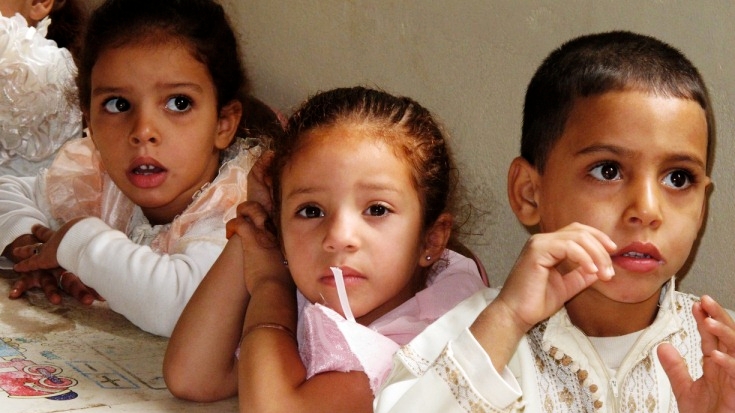Inadequate qualifications and skills of graduates, absence of comprehensive and equitable school access were among the main factors hindering Morocco’s progress in the area of education, making investment in human capital through quality education a key development priority. The main challenges of the education sector were to enhance its quality and systemic efficiency as well as boosting learning achievement. At the launch of the project in 2008 for example, there was absolutely no enrollment in new university programs in pre-service teacher education and the budget allocated to schools sector was as low as 4.5% of Gross Domestic Product (GDP). The urban-rural gap was significant in terms of net enrollment rates in lower secondary schools, with 64% enrolled in urban areas against only 20.3% in rural areas. At 51.8%, the completion rate of grades 1 through 9 was also low.
Solution
The EDPL1 was designed to support the implementation of the Government's "Education Emergency Program 2009-2012" to improve the effectiveness and efficiency of service delivery and educational outcomes through an increase in primary net enrollment rate, secondary net enrollment rate and completion rate for grades 1-9. A certain number of factors positively impacted implementation support of the Emergency Program. Among these factors were strong Government ownership, support from the highest levels of decision making in the country, including His Majesty King Mohammed VI, and the incorporation of lessons learned from previous projects, such as the importance of active communication channels given the large number of actors and the importance of supervision at the decentralized level.
Results
EDPL1 has contributed to better use of Government resources through improved coordination between key ministerial departments and better coordination with and among donors. It has also contributed to maximizing the benefits of technical assistance, to unifying reporting requirements, and enhancing strategic planning. Data for 2011/12 indicate that while not all target indicators for gender parity were met, the project did have some positive impact at the pre-school and primary levels with a primary female-male net enrollment ratio increase of nearly 2 percentage points from 96.8% to 98.6%. Net enrollment rates increased in urban and rural areas at all levels and categories (except pre-school male rural), with an overall net enrollment rate moving up from a baseline of 48.2% at the onset to 53.9% at project closing. Teachers’ in-service training was improved, with over 2.5 million trainee-days delivered from 2009 to 2011, representing 76% of the target programmed. The scholarship amount was increased from 700 MAD to 1,260 MAD (US$81 to US$146 equivalent) per quarter and was extended to cover the entire academic year. At project completion, 2,200 students were enrolled in university under-graduate programs and 7,850 students in the Regional Centers for Education and Training post-university professional programs, from zero at the onset.
Bank Group Contribution
The World Bank provided financing for US$ 60 million.
Partners
External partners financially supporting the Government’s education reform program 2009-2012 included: African Development Bank (€75 million); European Investment Bank (€200 million); European Union (€93 million in grant); Facilité d’Investissement de Voisinage (FIV, €15 million in grant); French Development Agency (€50 million); Spanish International Cooperation Agency for Development (€14 million in grant). Implementing partners (from the central level) agree that overall the Education Emergency Program (EEP) 2009-2012 was greatly beneficial for improving the education sector. At the regional level, implementing partners report that many positive things have happened during the program period and specifically cited: social programs for creating demand, improved relationships between schools and parents associations and better budget and strategic planning.
Moving Forward
The World Bank approved a loan of US$100 million for a Second Education Development Policy Loan in May 2013 which supports the Government's Medium Term Development Plan for the education sector for 2013-2016. The Plan includes five overarching strategic pillars: access/opportunity, quality of teaching, schools, sector governance and human resources capacity building and management. Preparation of another follow-up project will begin in mid-2014. The main areas of focus will include education quality, equity and governance.
Beneficiaries
The program increased boarding school scholarships and helped to increase demand for schooling and reduce student dropouts in rural areas. Another area where major efforts were made was in training school directors and pre-service teacher training, thanks to the creation of the Regional Centers for Education and Training.
